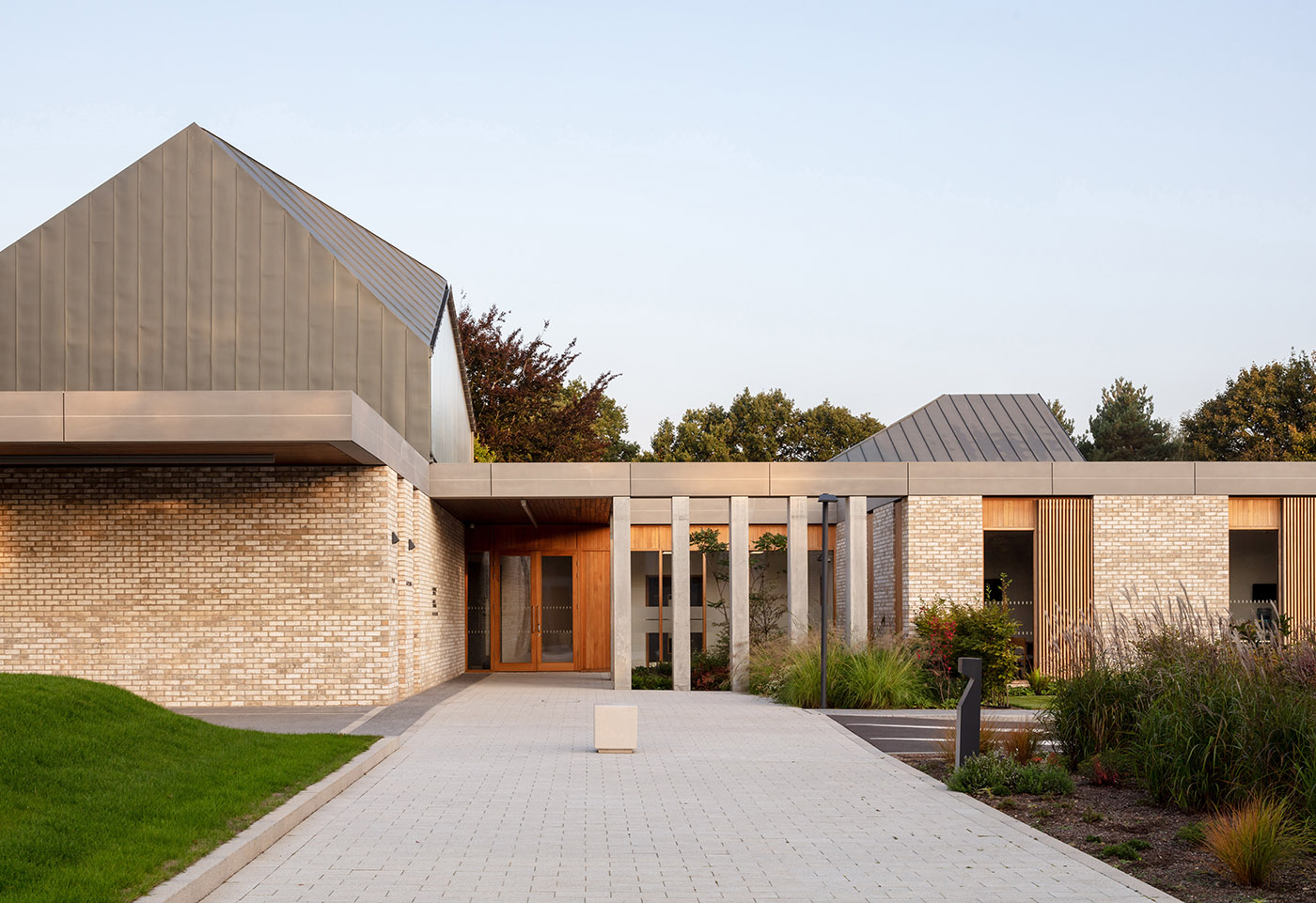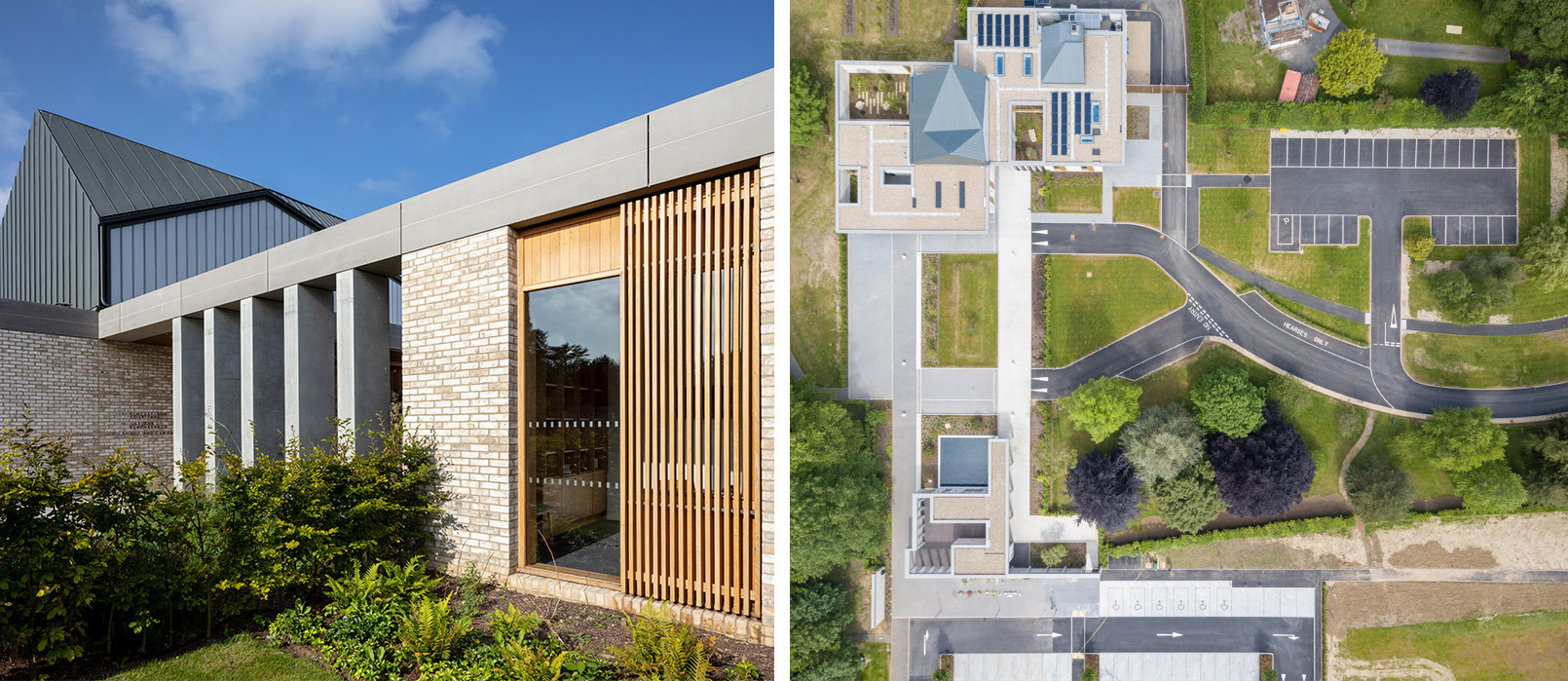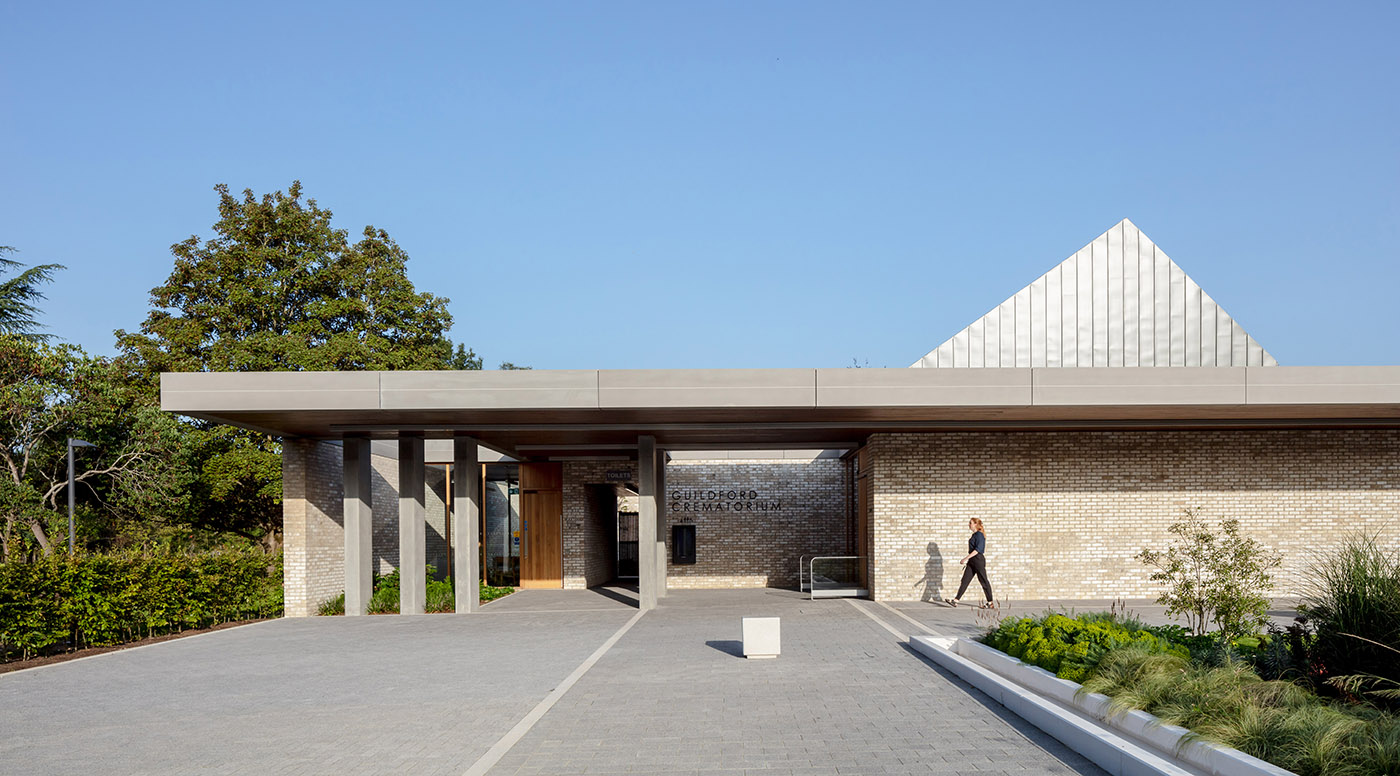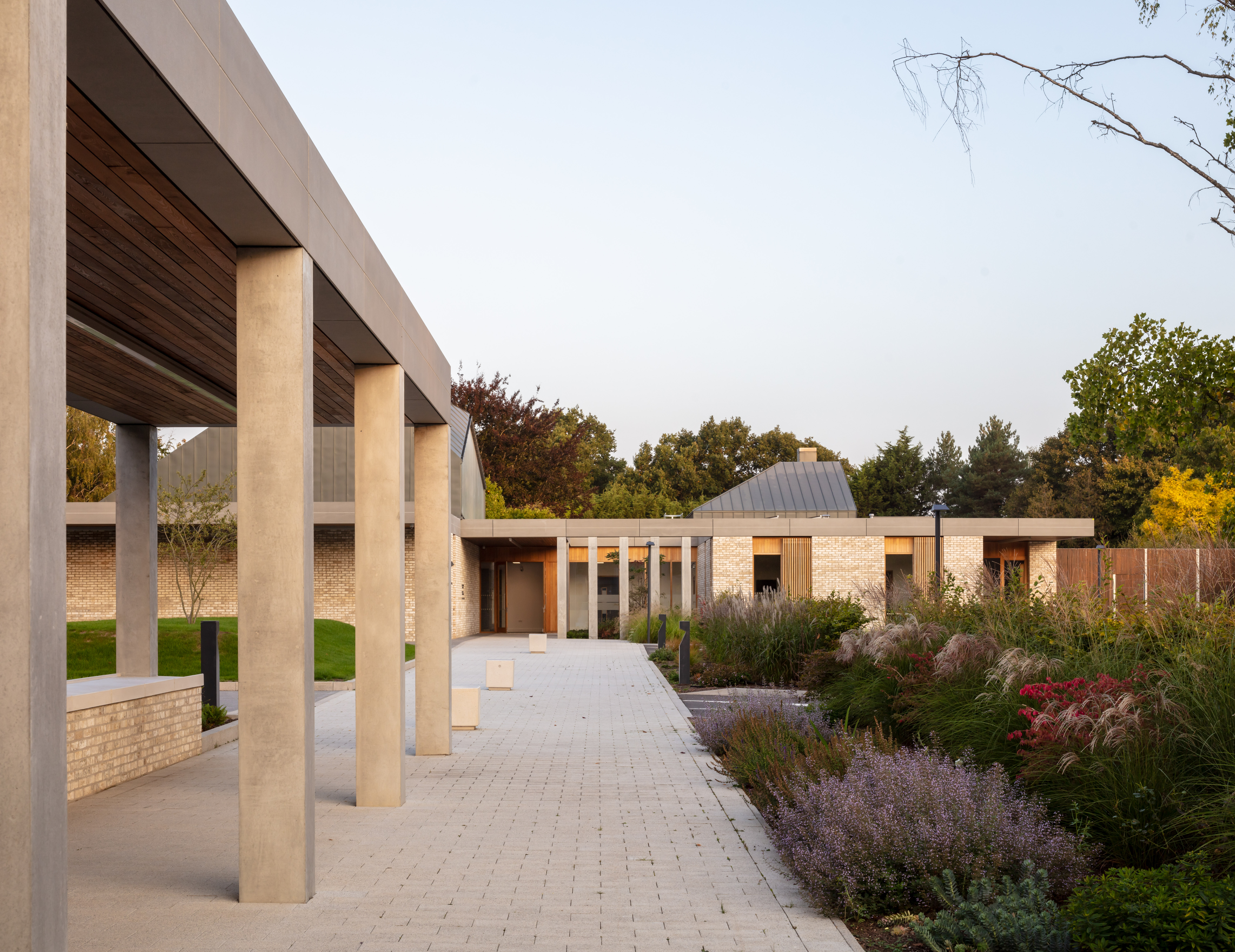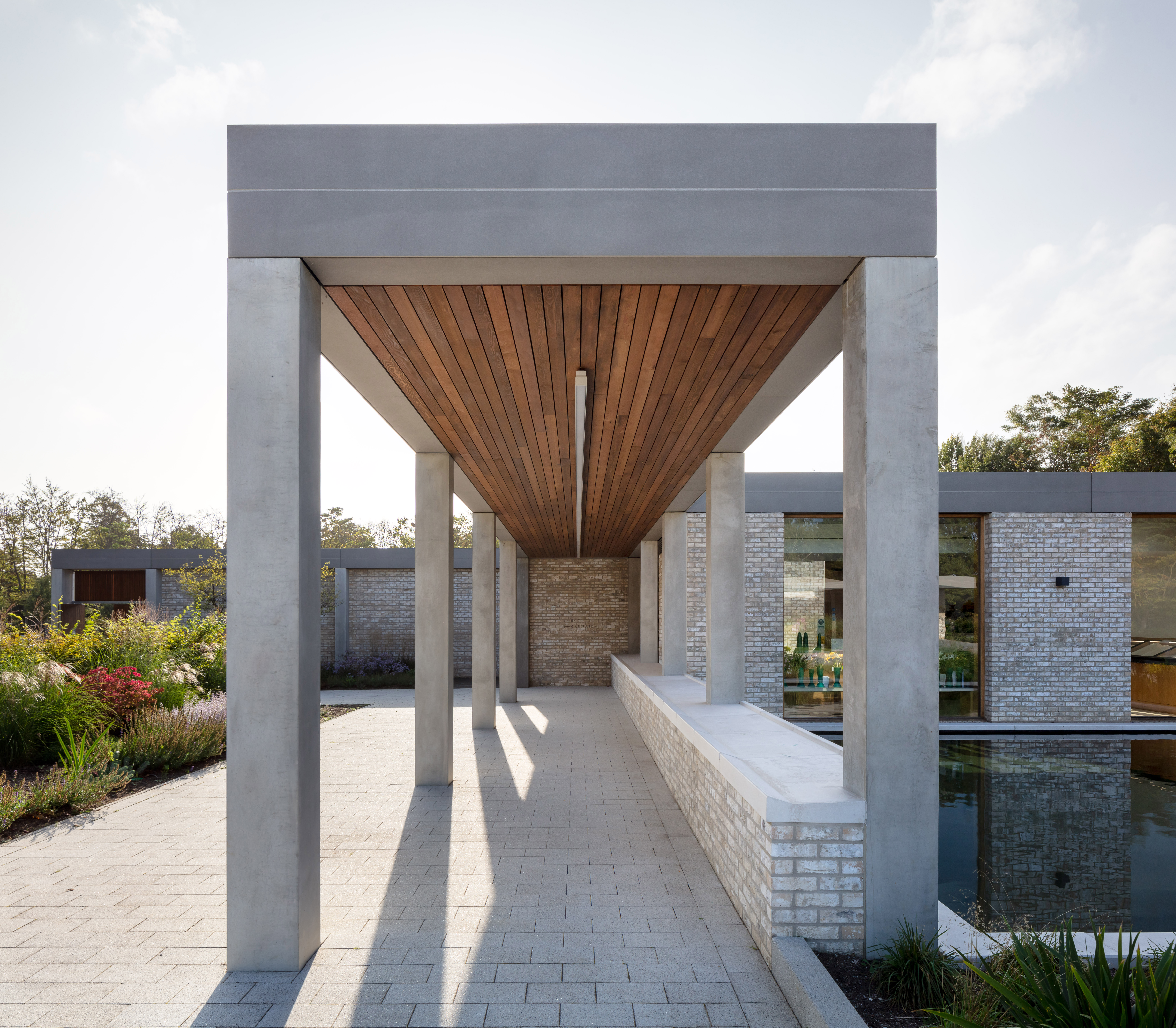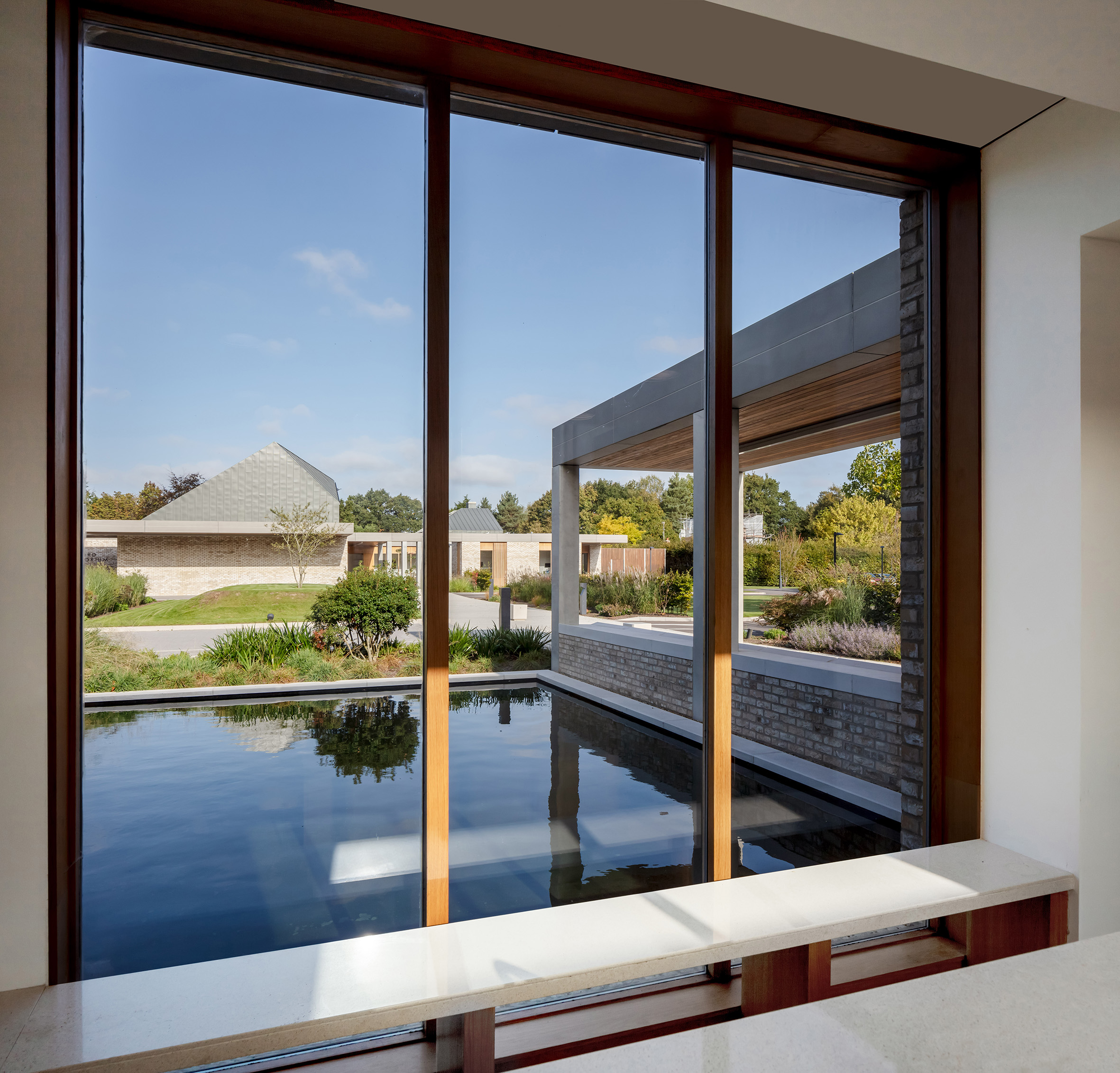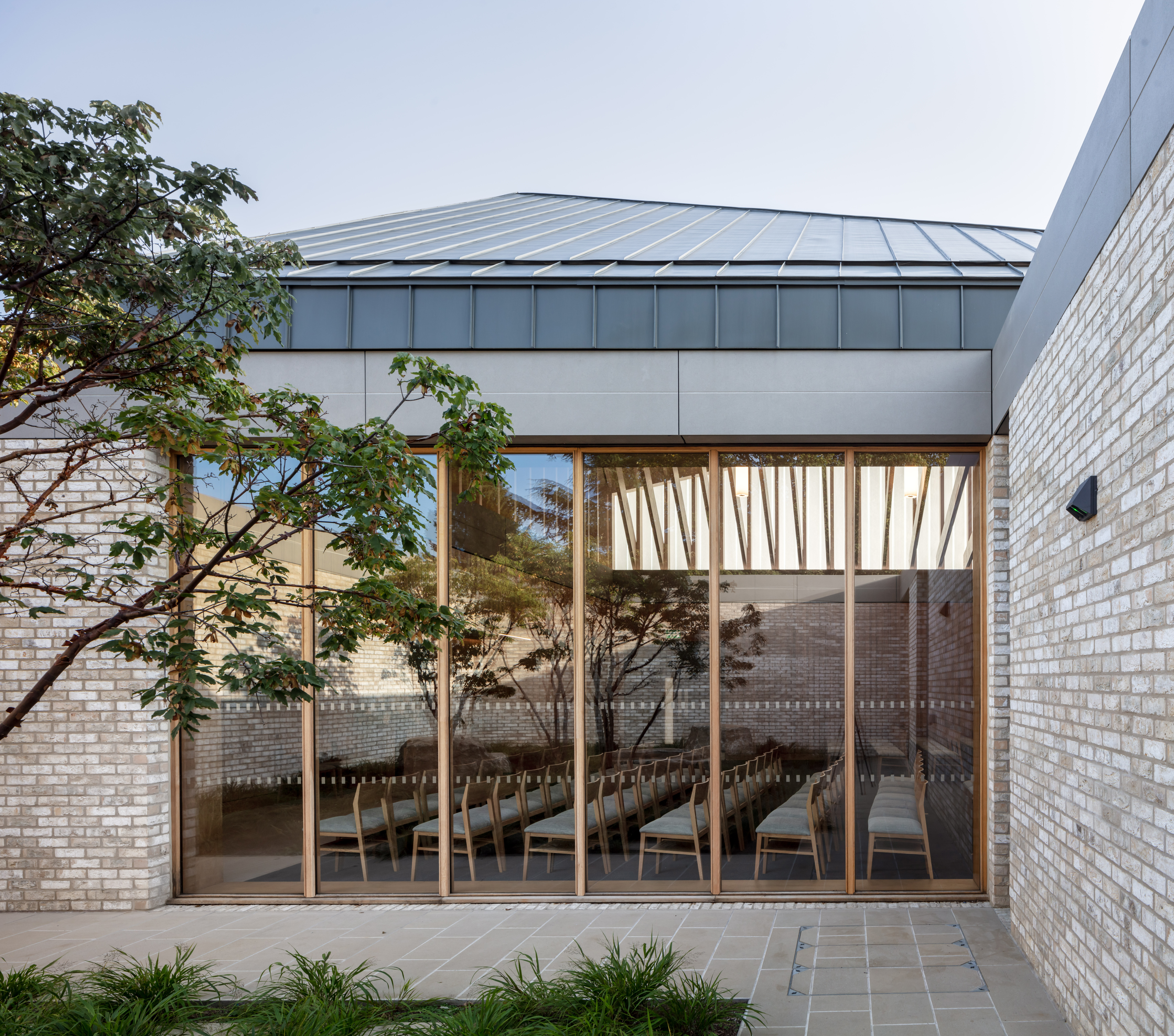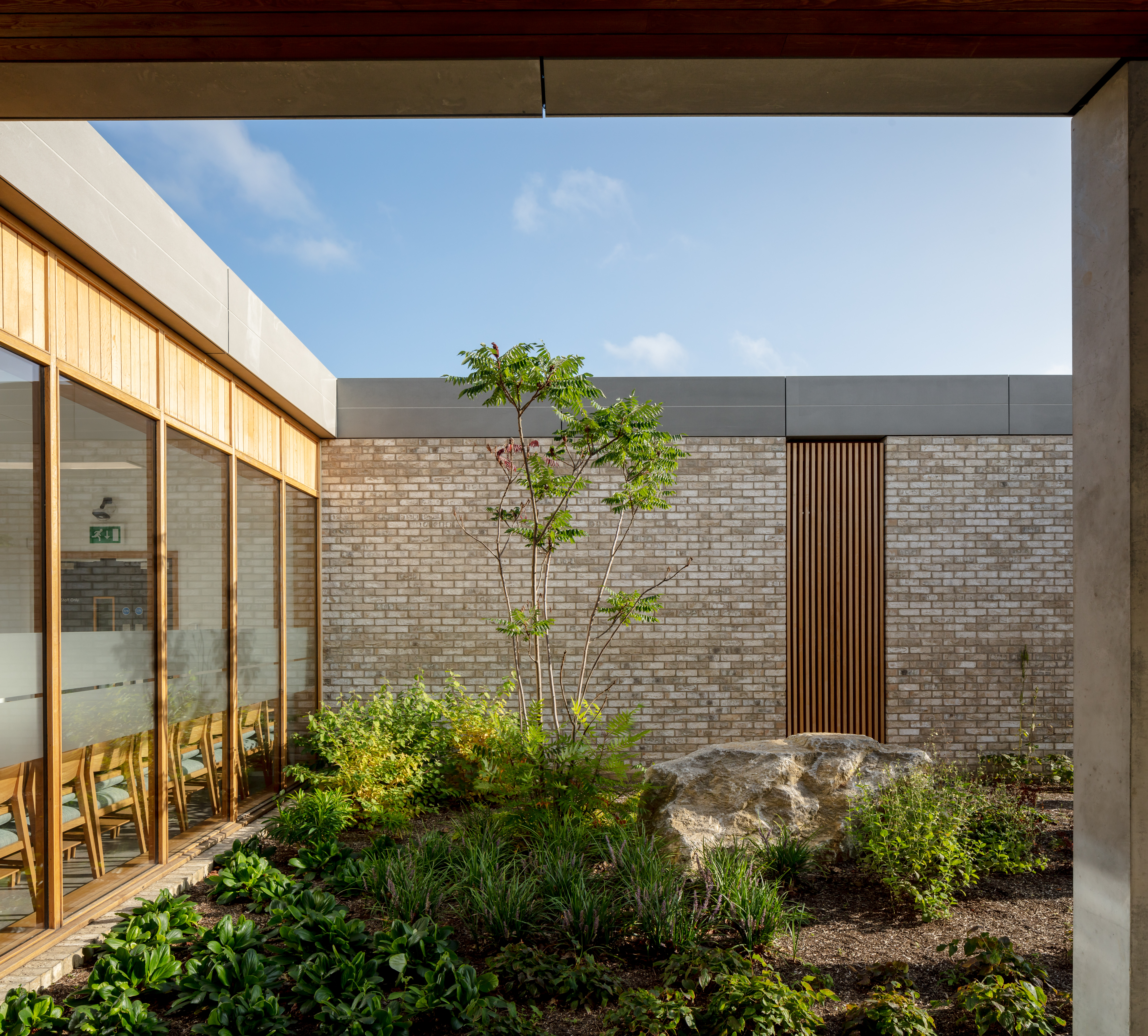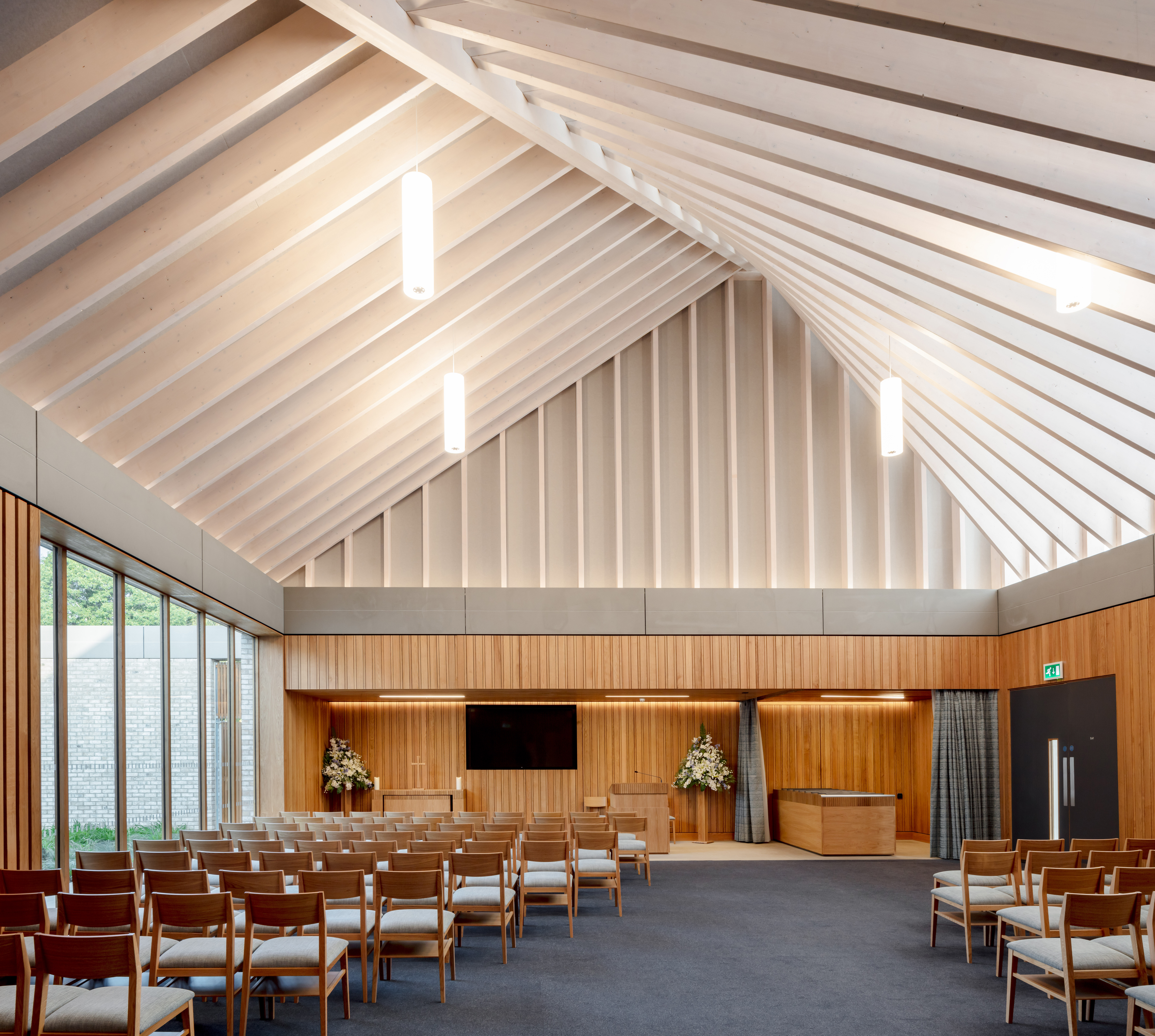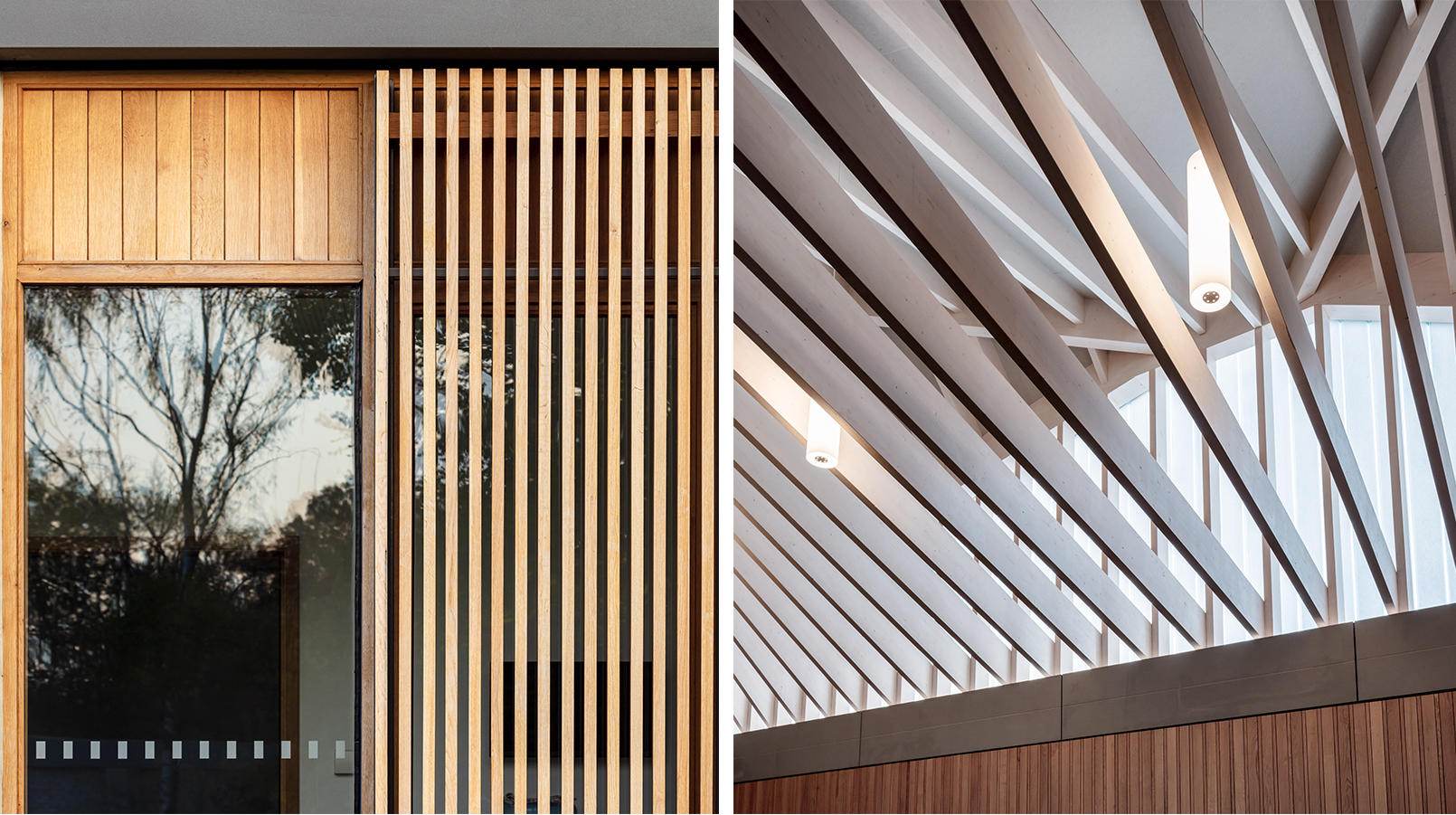The concept for both building and landscape was influenced by the range of visitors to Guildford Crematorium and the stages of grief which they experience as they move through and use the site. The flow of mourners, through these stages, was fundamental to the design response. Modern grieving practices incorporate informal and flexible internal arrangements, cater to a large spread of congregation numbers and demand non-denominational spaces in which to both grieve and celebrate life. The project caters to those experiencing other stages of grief, including during the arrangement of a service, the potential to view the committal of the coffin, the collection of ashes following the ceremony and the, often life-long, return to site to visit memorials.
The geometry of the building is driven by site constraints and visitor arrival routes. The building programme has been spaced along the visitor journey with the Remembrance Court forming a special place for reflection, solitude and memory, separated from the main building by a reflective pool, which acts as a pin wheel separating those arriving, departing and visiting the site.
Using the walled garden typology, masonry walls obscure internal and external spaces to those viewing the building from the memorial gardens. Atop this folding wall, a concrete band sets a solid and continuous datum, from which spring two geometric volumes. The volumes, constructed of timber and clad in zinc, announce the two key uses of the building – chapel and crematory. The forms acts as waymarks for visitors as they approach the building.
Within the chapel, there are views to a protected courtyard landscape. An exposed, highly engineered¬ glulam timber roof structure provides clean, functional and economic 3 pin arch over the chapel with additional natural light provided by high level clerestory window. The catafalque and coffin sit within the chapel, under a lower canopy to provide intimacy, wrapped in the warmth of vertical oak board cladding. This feature is extended into the chapel lobby, office reception area and external canopies.
A phasing strategy enabled the crematorium to remain open, beginning with discrete enabling works to construct a new tool store which doubled as a bat sanctuary, followed by carpark works, temporary chapel, and crematory. In parallel to these works the construction of the remembrance court began and on completion the main building progressed with asbestos removal, demolition and construction of the main building.
Culturally and socially the crematorium has been and continues to be an important place of reflection for family and friends. The landscape and buildings are both important and significant elements which are intrinsically linked to the act of saying goodbye, allowing family and friends to move on while providing the facility for lasting remembrance. The memorial gardens and courtyards were carefully designed so families and friends can return and spend time to reflect in the calm and quiet surroundings.
The landscape courtyard typologies were created along the mourner’s route, created by solid masonry walls, open colonnades and canopies. The walls and columns are capped with a concrete band sets a solid and continuous datum, from which spring two geometric volumes. The volumes, clad in dark zinc, announce the two key uses of the building – chapel and crematory. The geometry is driven by the arrival routes of visitors to the site – the apexes are at their most prominent to those arriving.
Within the chapel, there are views to a fully enclosed planted courtyard. An exposed, highly engineered timber structure provides clean, functional decoration within the chapel and above the mourning party. At low level, fine timber cladding provides warmth and rhythm. Meanwhile, the catafalque and coffin sit under a lower canopy to provide intimacy and focus to the space. The use of natural, tectonic materials occurs not just in the chapel but throughout the building and landscape, unifying internal and external spaces.
Photography by Simon Kennedy.
